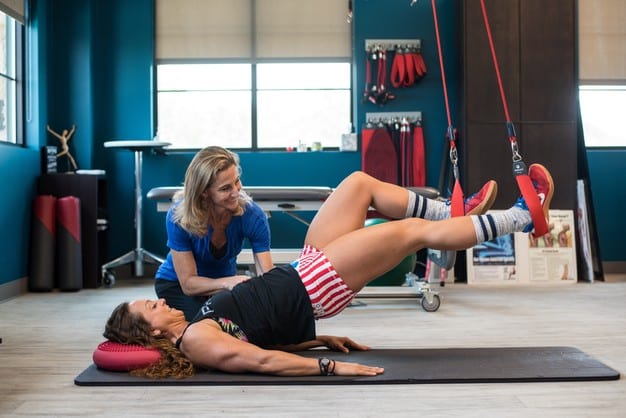We are only as strong as our weakest link. To an injured athlete, no truer words were ever spoken. Whether you are the football player with that tricky knee, or the volleyball player with a nagging shoulder, or the runner whose hip talks to you by mile 3, you know exactly what I am referring to. No matter how well things are going on the field or the court, they are only going as well as that weak link will allow.
What is a “weak link”? A weak link is a deficit within a biomechanical chain that produces musculoskeletal system dysfunction. Lets break that into digestible pieces.
We do not move like the pages of an anatomy book, pulling one bone from origin to insertion toward one another in simple planes of motion. We function in interdependent, 3-dimensional chains of movement. For that tennis serve to come off with the power of a pro we need an uninterrupted chain of force from the ground, through the legs, trunk / core, across one gluteal to the opposite shoulder, and out that distal elbow and wrist (See figure 1).
We are truly a symphony of multi-planar, rotational control dependent on the stability and organization of three integrated functional subsystems. These subsystems are the osteoligamentous (bones, ligaments, and joint capsules), the muscular subsystem (muscles, tendons, and fascia), and the neural subsystem (central and peripheral nervous systems).
Compromise in any one of these subsystems will result in dysfunction and compensation within the others. In a previous article, Dr. David Harris discussed how a non-surgical approach – regenerative medicine – successfully strengthens and stabilizes the osteoligamentous subsystem. But many times, due to muscle imbalance and compensatory movement patterns, complete recovery and protection against re-injury requires addressing the other two subsystems. Simply addressing the osteoligamentous stability would be like tightening the bolt on the hub of a wheel without looking at the integrity and balance of the spokes and expect it to perform optimally.
Closed kinetic chain weak link testing using the Redcord / Neurac Method examines the balance of the spokes, uncovering those long held or injury induced compensatory movement patterns. Once we identify the weak links in the kinetic chain, we use specific closed chain, body weight off-loaded, suspension exercise and precisely graded re-loading techniques to quickly and effectively “turn on” sleepy deep stabilization muscles and reintegrate proper movement patterns in order to restore kinetic chain integrity in both the young and the mature athlete.
How is the Redcord / Neurac Method so different? Many exercise modalities strengthen the muscular subsystem. Closed kinetic chain suspension exercise maximally challenges the dynamic stabilization of the neuromuscular system. This quickly enhances muscle balance, joint proprioception, body awareness, and coordination of proper motor patterns through progressive challenge of all three functional subsystems at once. In a series of visits NEURomuscular ACtivation (NEURAC) can turn that weak link into a thing of the past and unlock your performance potential.





